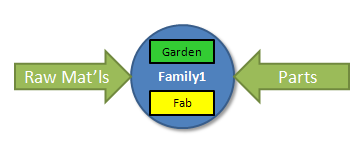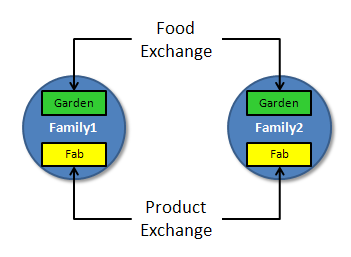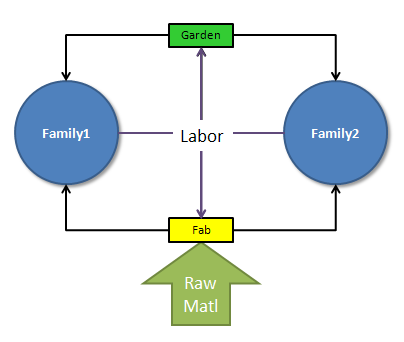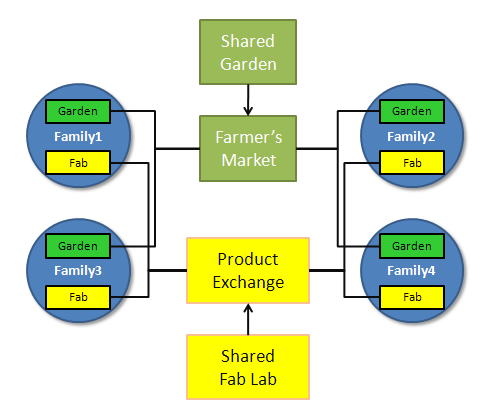OSEC Models of Cooperation: Difference between revisions
Jump to navigation
Jump to search
(Added images.) |
(Added text and notes.) |
||
| Line 4: | Line 4: | ||
[[Image:coop-1.png]] | [[Image:coop-1.png]] | ||
* composing | |||
* save seeds | |||
* animal propagation | |||
* max freedom | |||
* more risk | |||
* need money to buy parts | |||
=Neighbors= | =Neighbors= | ||
[[Image:coop-2.png]] | [[Image:coop-2.png]] | ||
Eco-village model? | |||
* one to one deals, barter | |||
* competition? | |||
* specialization | |||
=Communal Living= | =Communal Living= | ||
[[Image:coop-3.png]] | [[Image:coop-3.png]] | ||
* can it be made equitable? | |||
* group prioritization of production | |||
* motivation? | |||
=Village Market= | =Village Market= | ||
[[Image:coop-4.png]] | [[Image:coop-4.png]] | ||
* some things made in homes | |||
* others made in spec. fab unit | |||
* abundance is shared | |||
* shared values and goals are needed (potlatch) | |||
* could be closed if resources are present | |||
* exchange can sell outside if money is needed | |||
[[Category:Open source ecology community]] | [[Category:Open source ecology community]] | ||
Revision as of 14:08, 27 April 2011
Models of community cooperation vary somewhat by scale. Several models of cooperation are presented and analyzed here.
Self-Sufficiency
- composing
- save seeds
- animal propagation
- max freedom
- more risk
- need money to buy parts
Neighbors
Eco-village model?
- one to one deals, barter
- competition?
- specialization
Communal Living
- can it be made equitable?
- group prioritization of production
- motivation?
Village Market
- some things made in homes
- others made in spec. fab unit
- abundance is shared
- shared values and goals are needed (potlatch)
- could be closed if resources are present
- exchange can sell outside if money is needed



